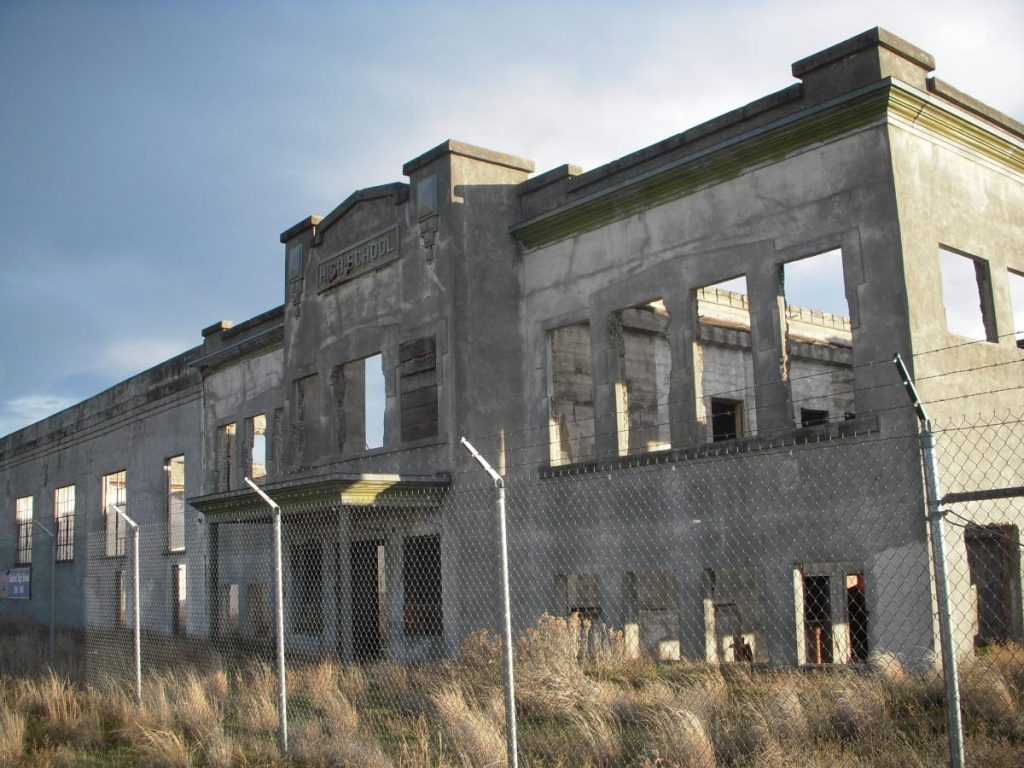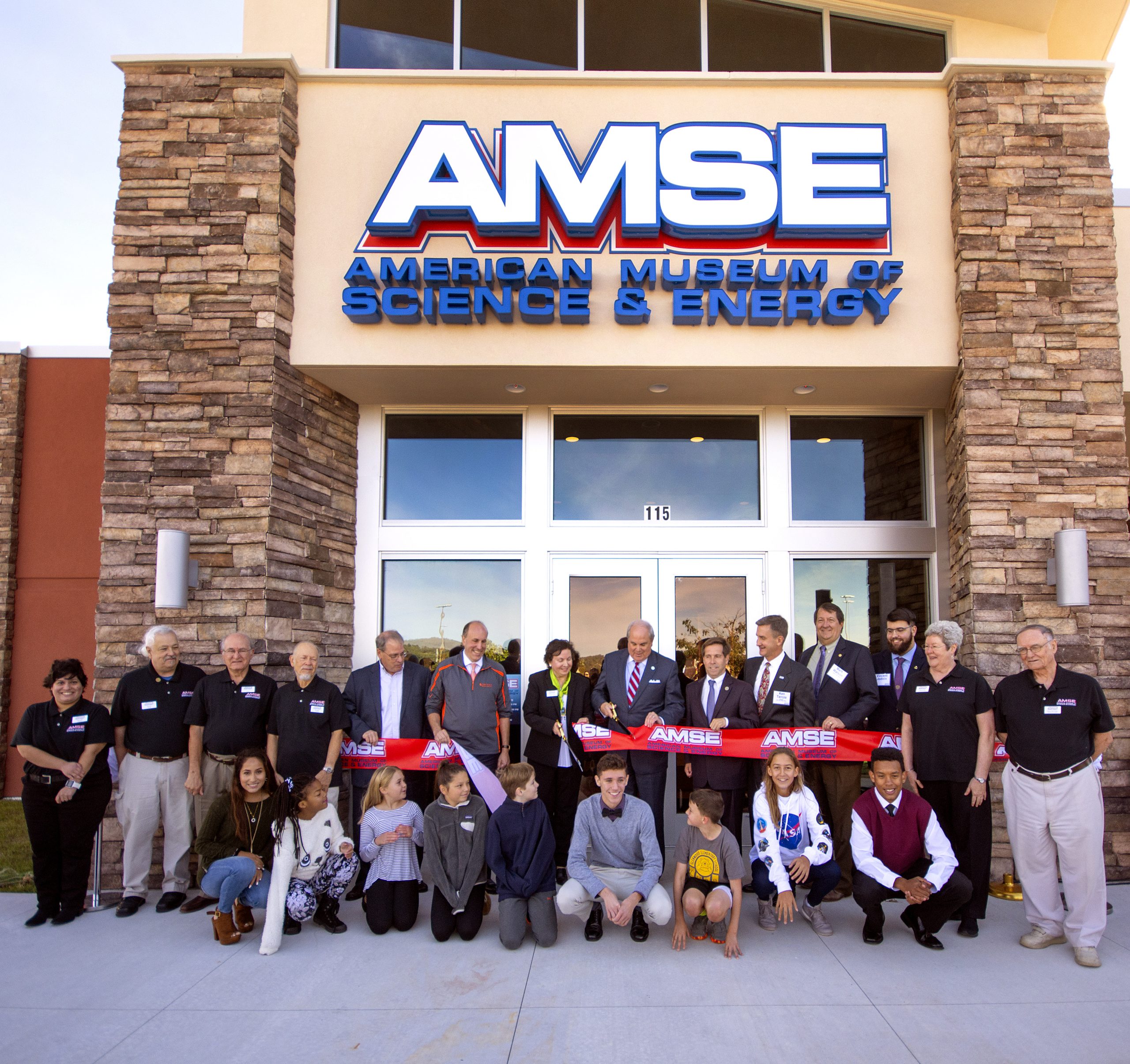On October 18, Oak Ridge’s popular American Museum of Science and Energy (AMSE) opened in its new location at 115 Main Street East. Since the 1970s, the museum had been housed at 300 S. Tulane Avenue in a 50,000 square foot building. The new AMSE building is smaller, but includes updated exhibits and displays. (Pictured: The ribbon cutting ceremony. Image courtesy of the U.S. Department of Energy Oak Ridge Office).
According to the Knoxville News Sentinel, “Visitors who go in order will move from an introductory area with a globe and a 7-minute video about Oak Ridge to the Manhattan Project and National Security, and from there to a Big Science display that includes exhibits about a number of Oak Ridge facilities and research projects. The last two sections of the museum deal with energy leadership and environmental restoration.” There are interactive and multimedia displays that should engage students and the public on history and STEM topics.
Some favorite items from the previous building made the move, including AMSE’s beloved Van der Graaff generator. The new building includes “lab” classrooms, a gallery, a space for traveling exhibits, and an auditorium. Regular event programming, including a lecture series and a storytelling program, are already underway. Julia Bussinger, the director of AMSE, explained to the Knoxville News Sentinel, “The new space is very immersive…“We are a science museum — we have to lead. We’re this inspirational spark for future scientists.”
AMSE is open seven days a week. The U.S. Department of Energy’s facilities public bus tours, open from March through November, are now leaving from the new AMSE building. For more on the grand opening and new exhibits, please see New, smaller American Museum of Science and Energy surrounds visitors with history, hands-on science and Oak Ridge’s American Museum of Science and Energy reopens at new location.
The Atomic Heritage Foundation congratulates AMSE on its successful move. We look forward to visiting Oak Ridge soon and enjoying AMSE’s exhibits.
Los Alamos
Heather McClenahan, the executive director of the Los Alamos Historical Society (LAHS), has announced she will retire from full-time museum work in April 2019 to pursue new ventures and to travel. AHF has very much enjoyed working with Heather over the years. We are particularly grateful for her partnership on the Voices of the Manhattan Project website, a joint project between AHF and LAHS. In addition, Heather is featured in our “Ranger in Your Pocket” programs for Los Alamos and has been a valuable partner on preservation projects. Congratulations to Heather and best wishes for her next adventure!
Hanford
The Hanford History Project has published a new book, Nowhere to Remember: Hanford, White Bluffs and Richland to 1943. Edited by Washington State University Tri-Cities professor Robert Bauman and Hanford History Project oral historian and archivist Robert Franklin, Nowhere to Remember uses oral history interviews to explore the lives of the people who lived in the Hanford area before the arrival of the Manhattan Project in 1943. The book highlights life in agricultural communities, the experiences of women, and the stories of people evicted from their lands by the Manhattan Project’s production facilities. You can purchase the book here.
The Hanford area’s pre-Manhattan Project history was also featured at the fall festival at the New Horizons High School in Pasco on Thursday, November 1. Rebecca Burghart, the site manager for the Hanford Unit of the Manhattan Project National Historical Park (NHP), and Manhattan Project NHP volunteers engaged with students about the area’s agricultural history. For more information, see the Manhattan Project NHP’s Facebook page.





